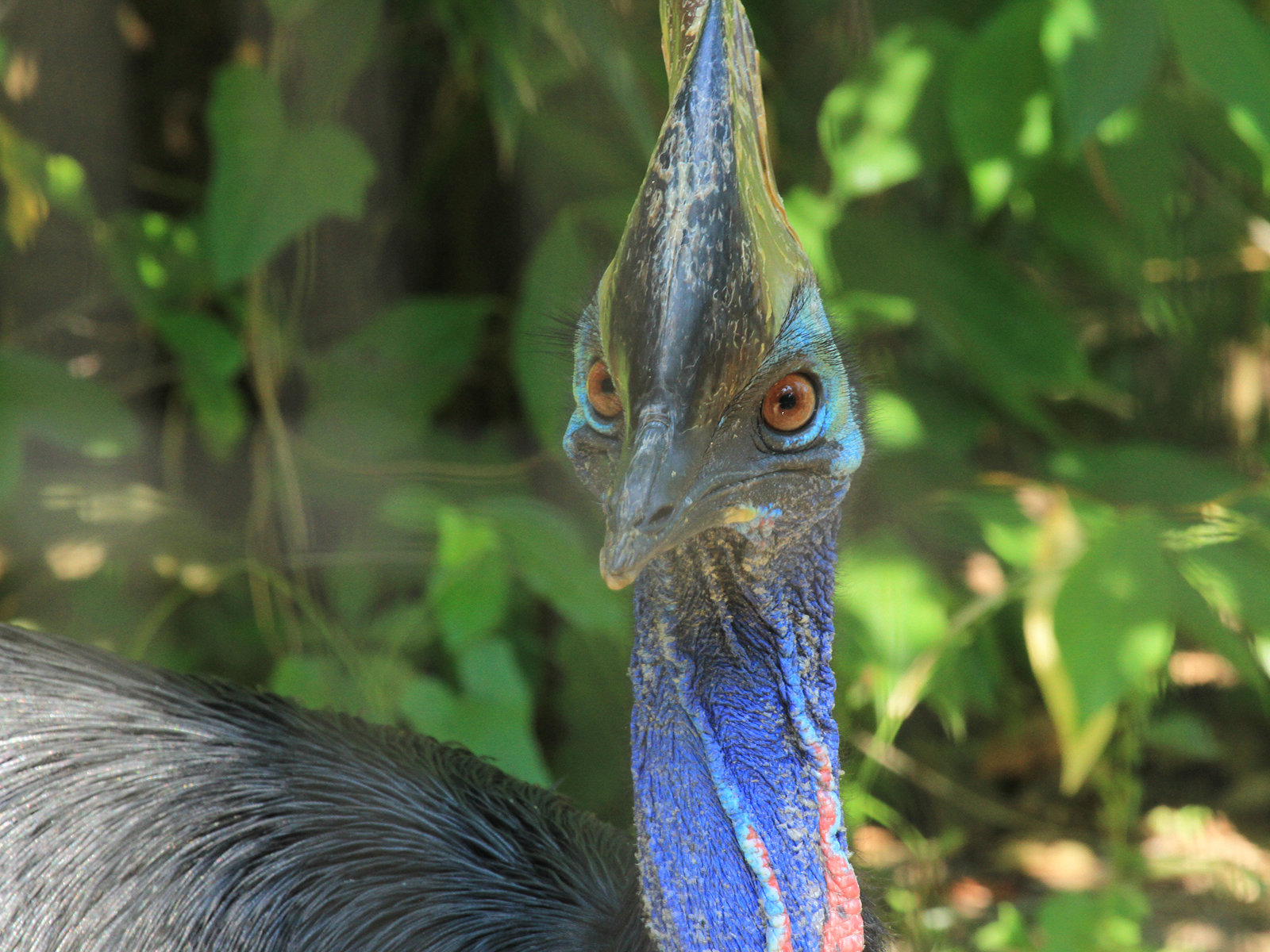Double-wattled Cassowary
Casuarius casuarius
Also called the southern cassowary
Class
Aves
Order
Casuariformes
Family
Casuaridae
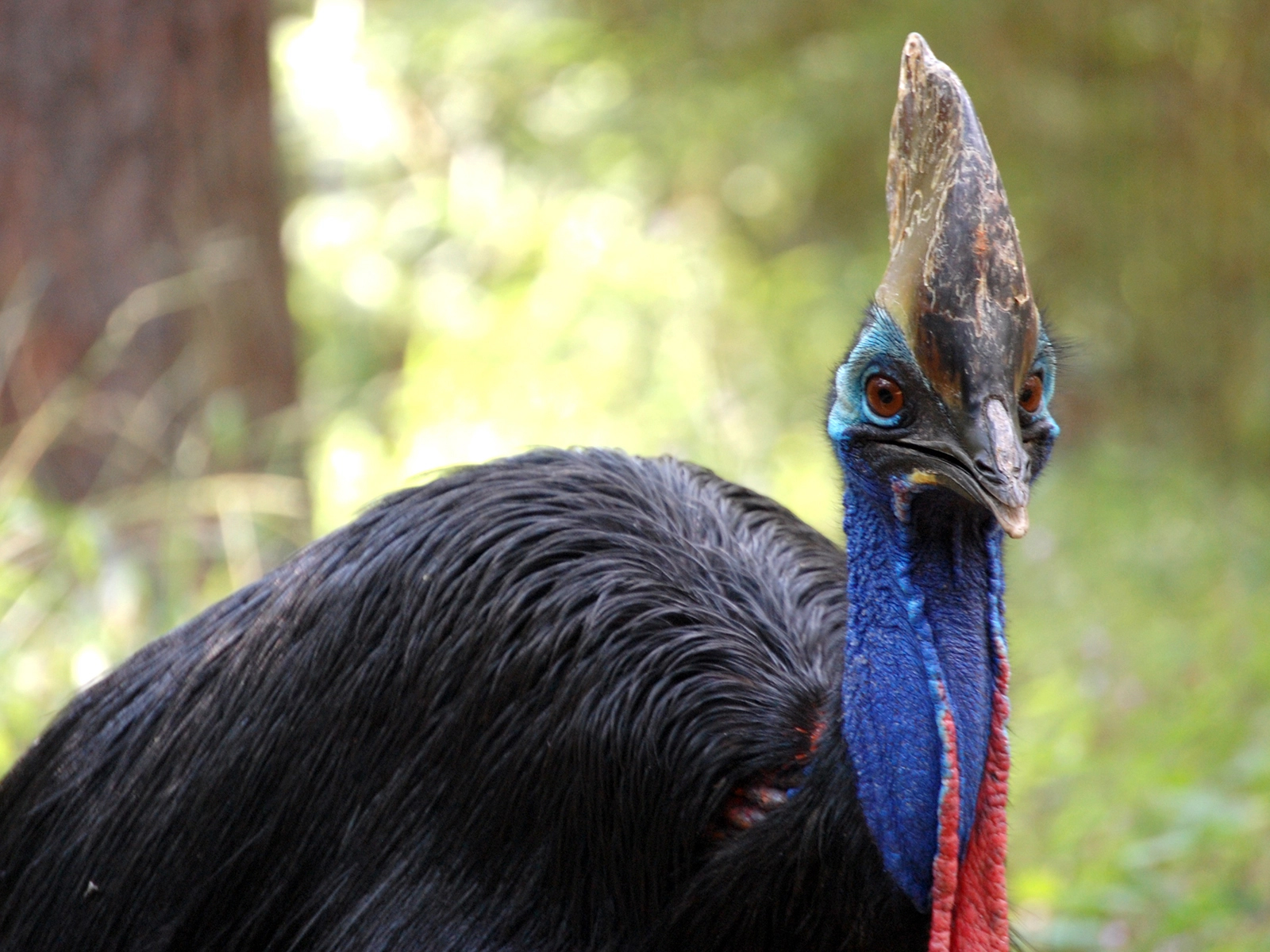
Also called the southern cassowary
Aves
Casuariformes
Casuaridae
Australia
Size: Up to 6 ft tall
Weight: Up to 128 lbs
Rainforests
Clutch: 3 - 5 eggs
Incubation: About 50 days
Fruits, seeds, insects, small vertebrates, fungi
Vulnerable
This includes the cassowary, emu, rhea, kiwi, and ostrich.
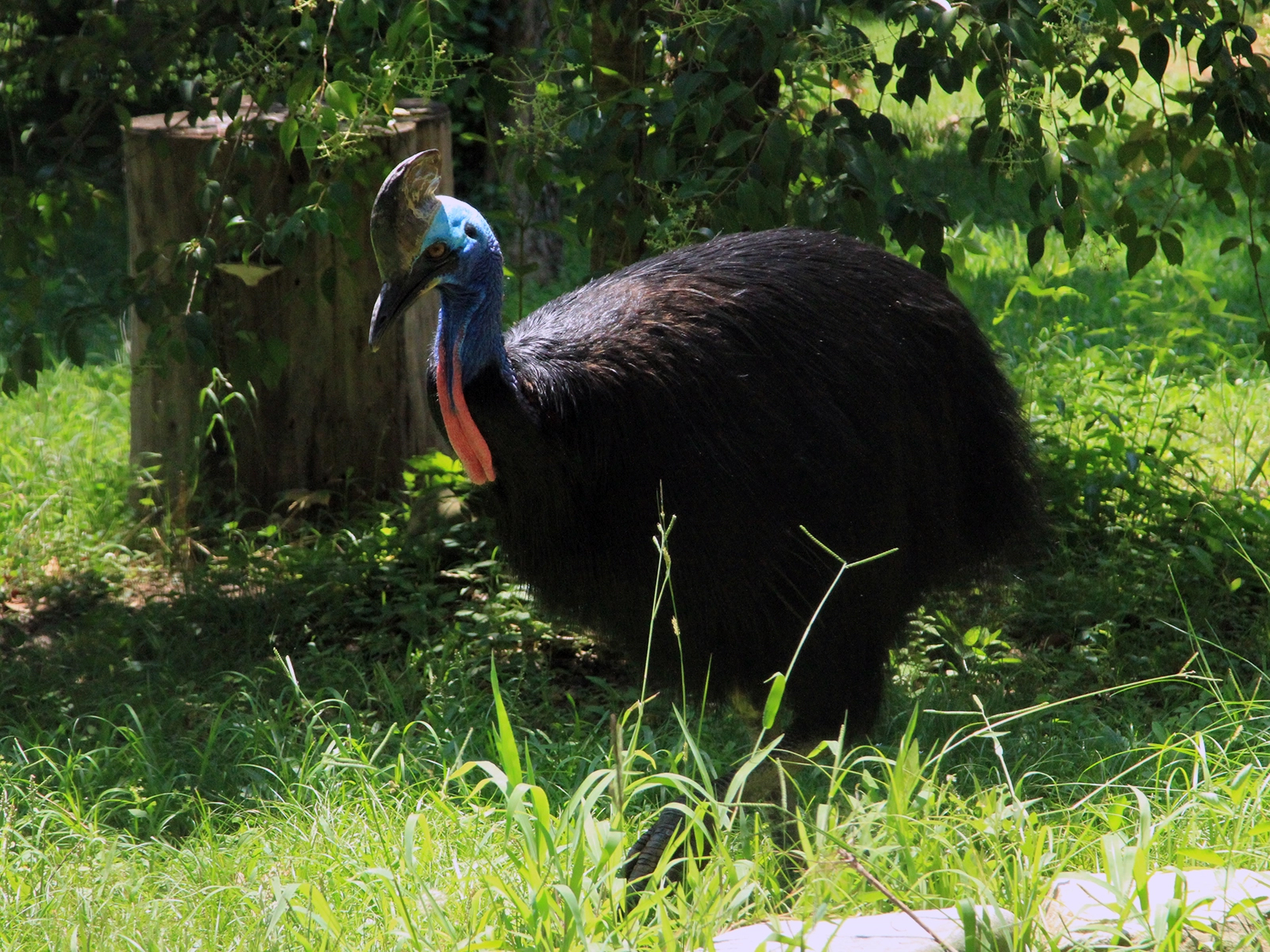
The cassowary has degenerative wings and cannot fly. Its flight feathers are reduced to coarse spines used to protect its flanks as it travels. Both sexes have a helmet-like structure on their heads called a casque. Cassowaries can run up to 30 mph and have three clawed toes on each foot.
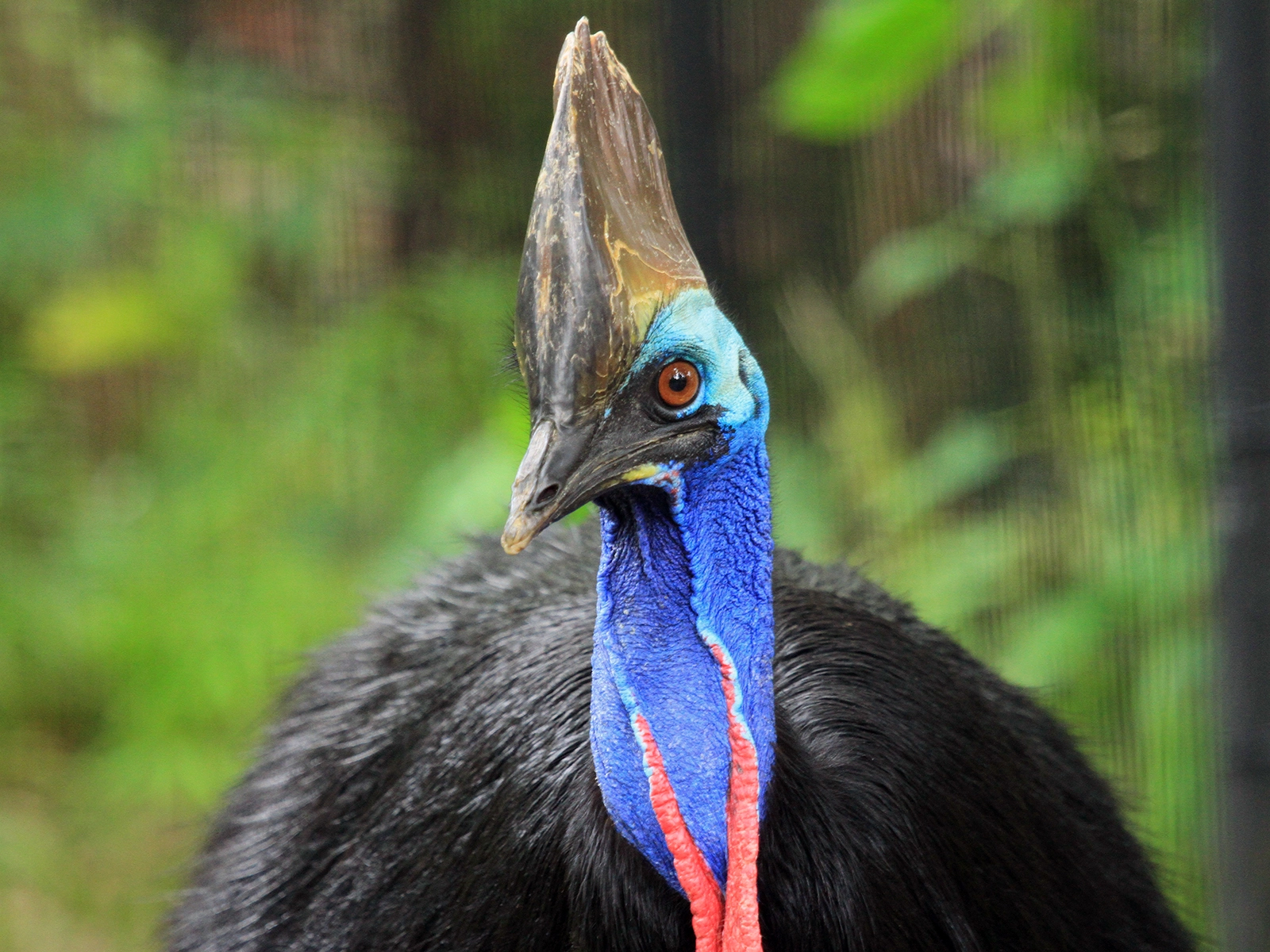
By feasting on a wide variety of fruits, these powerful birds disperse seeds far and wide through their droppings. Hundreds of plant species can only sprout and grow after passing through a cassowary’s digestive system, making the cassowary a critical key to a healthy rainforest.
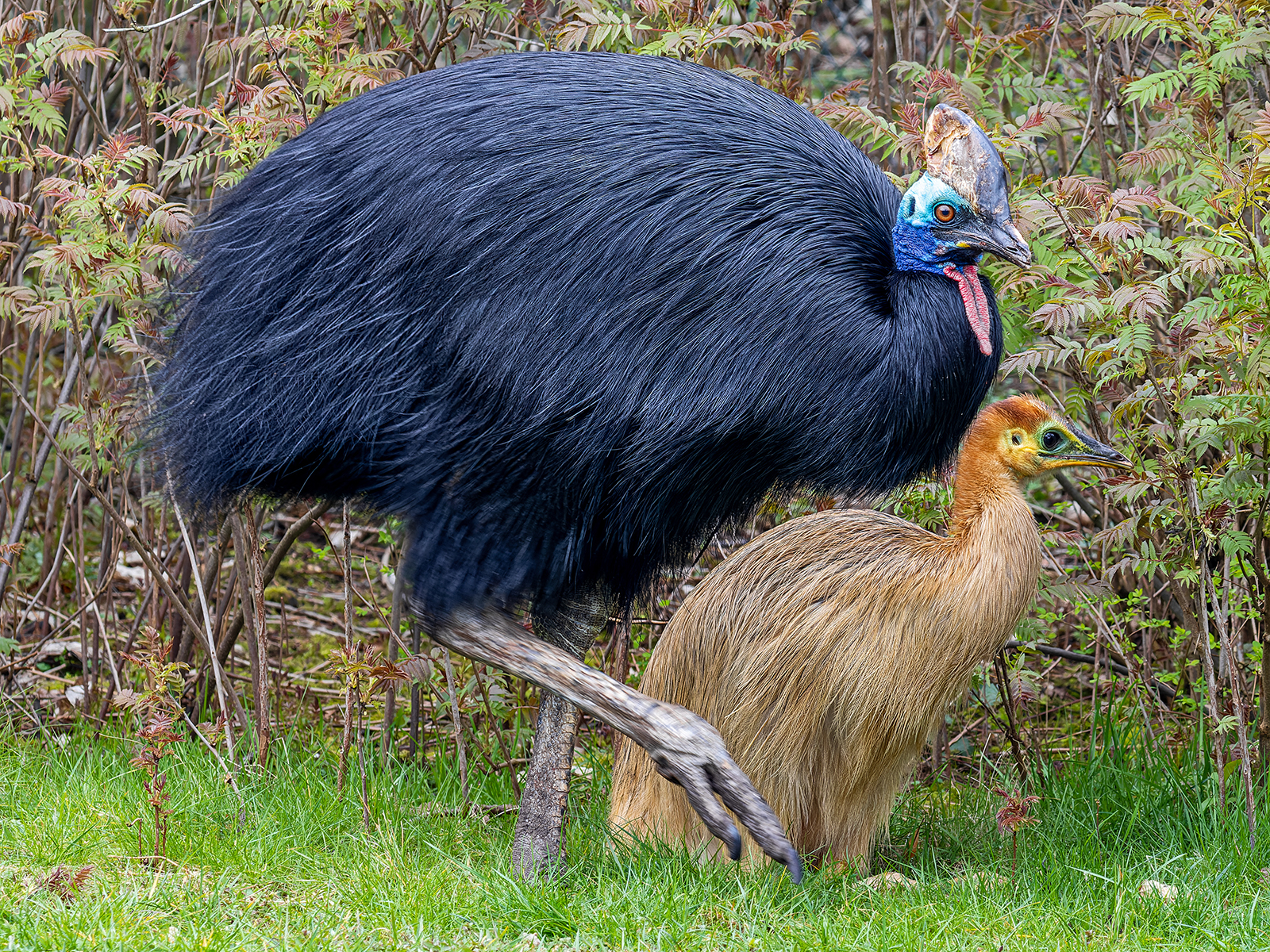
Double-wattled cassowaries tend to be solitary, only coming together to breed. Males are the sole caregivers, incubating the eggs by themselves and raising the chicks, which hatch after about two months.
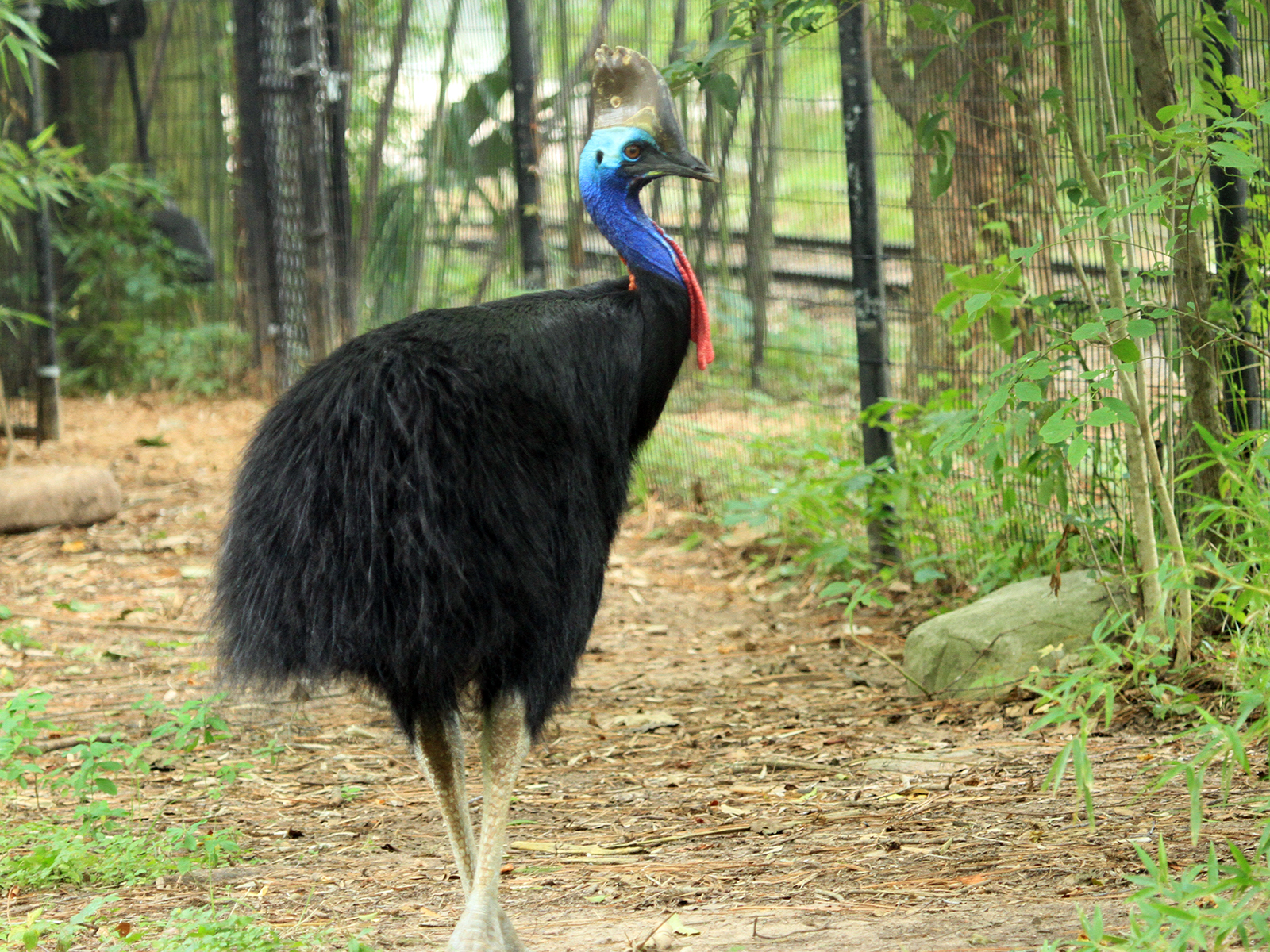
While the Southern Cassowary is globally listed as Least Concern by the IUCN, its populations are declining across much of its range, with fewer than 1,500 surviving in Australia.
The species is threatened by severe habitat fragmentation, which creates genetic bottlenecks that reduce long-term diversity. Other major risks include deforestation, vehicle strikes, poaching, and predation by dogs and feral pigs.
Support Reforestation Corridors: Cassowaries need safe travel routes to maintain genetic diversity. Support programs that plant and restore habitat corridors connecting fragmented patches of rainforest.
Sustainable Consumption: Be mindful of products sourced from regions prone to deforestation (like unsustainable palm oil or wood). Support companies committed to preserving natural habitats.
Roscoe Hatched July 4, 2000
Kiki Hatched May 1, 2013
